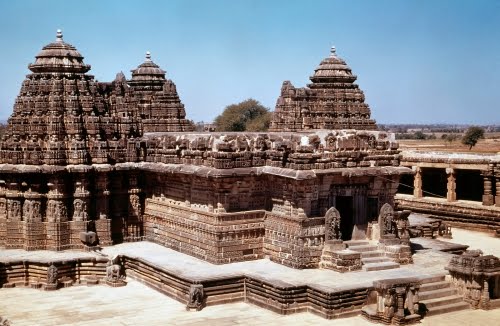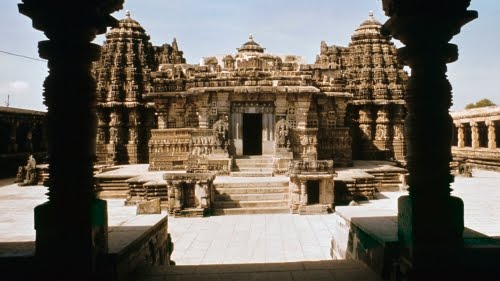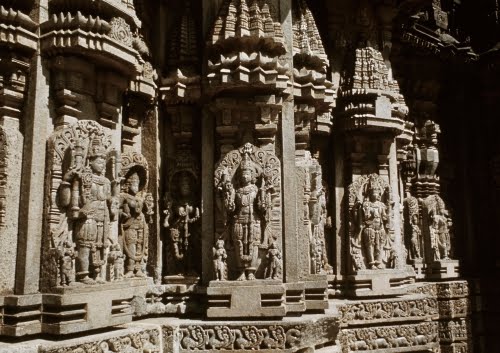Architecture as Sculpture: Hoysala Empire
When Western art history books talk about “architectural sculpture,” it is usually in the context of Romanesque and Gothic churches/cathedrals in Europe. When one is looking at temple architecture in parts of Asia, then we start to imagine that the line between architecture and architectural sculpture is very blurry. When studying temples in India, I am often struck by the observation that not only does the architecture aspire to imitate features of the natural world (like mountains), but the architecture is aspiring to be sculpture!
 |
| India, Prasanna Chennakesava Temple, Somnathapur, consecrated 1258 CE. Image © 2018 Davis Art Images. (8S-10088) |
Chennakesava means “beautiful” (chenna) and “Vishnu” (kesava). This temple is one of the 1500 that were built during the Hoysala empire (1026–1343 CE) and represents the high point of the kingdom’s architectural style. Descriptions of Hoysala architecture always indicate that it was very ornate. Does this mean loaded with sculpture, so much so that the whole building visually takes on a sculptural feeling? Talk about “texture” on a grand scale! This temple is an example of one of the many regional variations on temple architecture that make the late medieval period of Indian architecture (ca. 1192–1526) so fascinating.
This temple is unique among late medieval Indian temple designs in that the mandapa (prayer hall, fronted by the half-hall, ardhamandapa) has a flat, rather than pyramidal tower, roof. Another interesting fact is that the vimana, the tower above the inner sanctum, is the same height and importance as the other sikhara (towers, literally “mountain,” for obvious reasons). This type of sikhara is called the vesara. It is characterized by a squat, pyramidal shape. These sikharas are totally enriched in sculpture that give them a compelling visual texture from a distance.
Hoysala architecture is generally more ornate than other southern styles. The temple is also unique in that it is dedicate to three deities: Vishnu, Krsna, and Siva, with sanctuaries under the sikharas. This temple is sometimes called a “star temple,” because the plan has a sixteen-pointed format.
The earliest Hoysala kings came from the hills northwest of present-day Halebid, which became their capital in 1060. The Hoysala acquired much territory from the Chalukya dynasty (543–753 CE) and the Chola dynasty (300 BCE–1279 CE). By the early 1200s, the Hoysala dynasty was dominant in southern India. Struggles with rival kingdoms and futile territorial ambitions with the Delhi Sultanate (1206–1526) led to the collapse of the Hoysala during the 1300s. They were succeeded in the region by the Vijayanagar dynasty that ruled from about 1366 to 1646.
 |
| India, Prasanna Chennakesava Temple, from entrance gate, Somnathapur. Image © 2018 Davis Art Images (8S-10089) |
The vimana is usually visible from the approach to Indian temples. The uniform size of the sikharas at Somnathapur make it hard to distinguish.
 |
| India, Prasanna Chennakesava Temple, assembly hall (mandapa) wall with images of Siva and Parvati (left) and Laksmi and Vishnu (center), Somnathapur. Image © 2018 Davis Art Images. (8S-10091) |
The two major gods, Siva and Vishnu, are found in their multiple incarnations in Hoysala temple reliefs. Some of these high reliefs depict Siva in action, such as slaying a demon or dancing on the head of an elephant. His consort Parvati or Nandin the bull often accompany him. He may be represented as Bhairava, another of Siva’s many incarnations. The sculptural program here, so rich and beautifully high relief, was created at roughly the same period of much of the Gothic sculpture programs in European churches. The sculpture also serves the same function as the Gothic: educating worshippers about their faith. Hello global village!


Comments